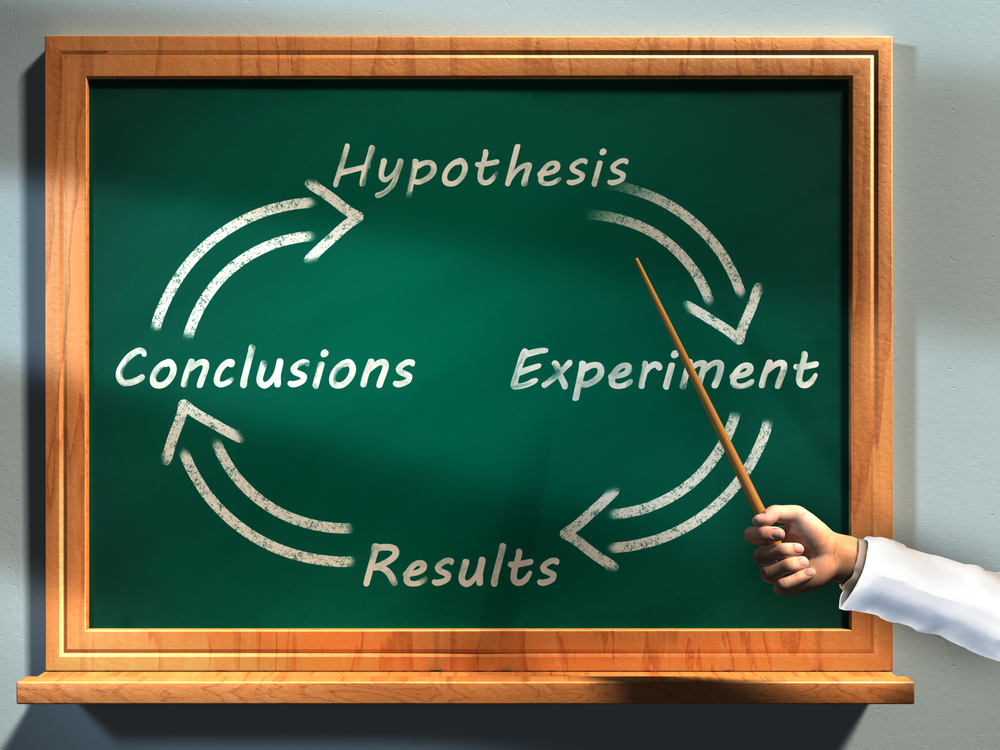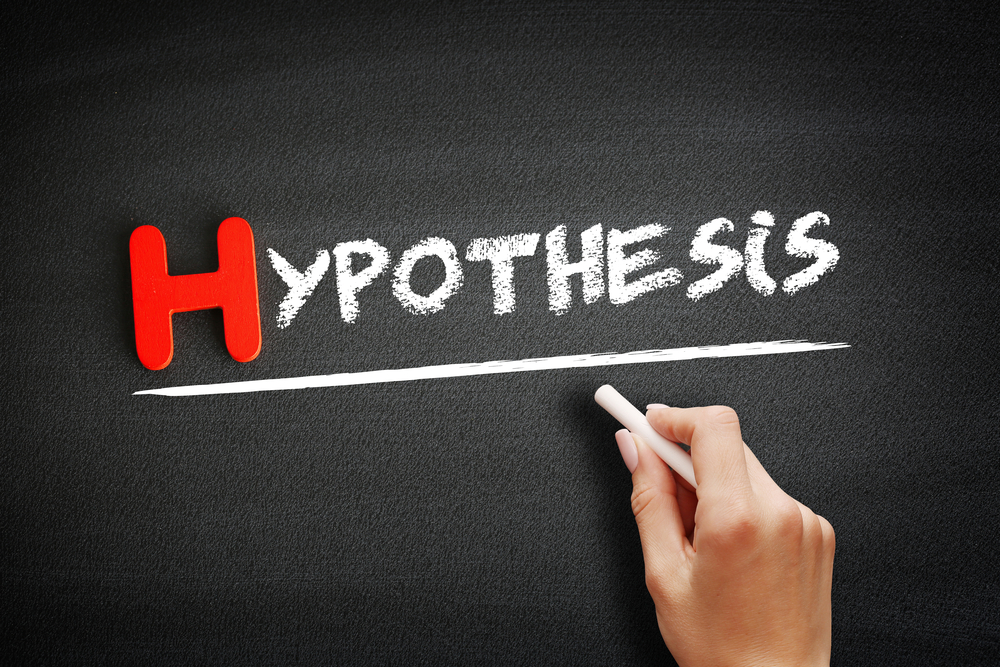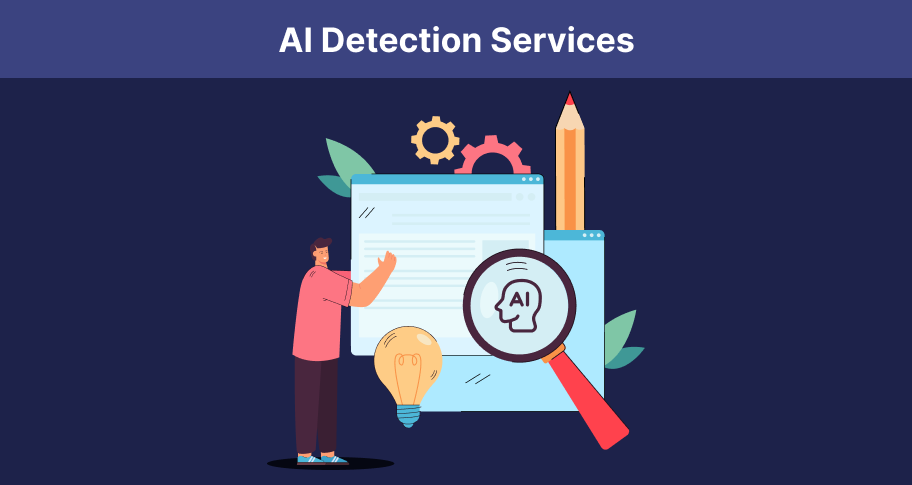A hypothesis is a guess about what’s going to happen. In research, the hypothesis is what you the researcher expects the outcome of an experiment, a study, a test, or a program to be. It is a belief based on the evidence you have before you, the reasoning of your mind, and what prior experience tells you. The hypothesis is not 100% guaranteed—that’s why there are different kinds of hypotheses. In this article, we’ll explain what those are when they should be used. So let’s dive in!
What is a Hypothesis / Definition
A hypothesis is like a bet: you size things up and tell your mates exactly what you think is going to happen with respect to X, Y, Z. It can also be like an explanation for a phenomenon, or a logical prediction of a possible causal correlation among multiple factors. In science—or, really, in any field, a hypothesis is used as a basis for further investigation. For example, many qualitative or exploratory studies are conducted just so that the researcher in the end can formulate a hypothesis after all the data is collected an analyzed.
In short, it is an educated guess, based on existing knowledge or observation. It is a way of proposing a possible explanation for a relationship between variables.
One thing to remember is this: the key characteristic of a hypothesis is that it must be testable and potentially falsifiable. This means that it should be possible to design an experiment or observation that could potentially prove the hypothesis wrong. That is a very important point to keep in mind.
For that reason, hypotheses are usually only formulated after conducting a preliminary review of existing literature, observations, or after obtaining a general understanding of the subject area. They are not random guesses. They are grounded in some form of evidence or understanding of the phenomena being studied. The formulation of a hypothesis is a big step in the scientific method, as it defines the focus and direction of the research. A lot of time is often spent simply on developing a good hypothesis.
Why? A well-constructed hypothesis not only proposes an explanation for an observation but also often predicts measurable and testable outcomes. It is not merely a question, but rather a statement that includes a clear explanation or prediction. For example, rather than asking “Does temperature affect the growth of bacteria?”, a hypothesis would be something like this: “If the temperature increases, then the growth rate of bacteria will increase.” It is clear, measurable, testable, and potentially falsifiable.
In the scientific community, a hypothesis is respected when it has the potential to advance knowledge, regardless of whether testing proves it to be true or false. The process of testing, refining, or nullifying hypotheses through experimentation and observation is part of what research is all about.

Different types of Hypotheses
Hypotheses can be categorized into several types. Each type has a unique purpose in scientific research. Understanding these types is helpful for formulating a hypothesis that is appropriate to your specific research question. The main types of hypotheses include the following:
- Simple Hypothesis: This formulates a relationship between two variables, one independent and one dependent. It is straightforward and concise, making it easy to test. It is most often used in basic scientific experiments where the aim is to investigate the relationship between two variables, such as in laboratory experiments or controlled field studies.
- Complex Hypothesis: Unlike the simple hypothesis, a complex hypothesis involves multiple independent and dependent variables. It is used in studies that are looking at several factors simultaneously, where there is an interplay of multiple variables. These are common in fields like social sciences, behavioral studies, and large-scale environmental research.
- Directional Hypothesis: This type predicts the nature of the effect of the independent variable on the dependent variable. It specifies the direction of the expected relationship. It tends to be used studies where prior research or theory has already suggested a specific direction of influence or effect, such as in clinical trials or in studies testing theoretical models.
- Non-directional Hypothesis: In contrast to the directional hypothesis, a non-directional hypothesis does not specify the direction of the relationship. It simply suggests that there is a relationship between variables without stating whether it is positive or negative. It is often used in exploratory research where the direction of the relationship is not known, such as in early-stage psychological research or when studying new phenomena.
- Null Hypothesis: The null hypothesis states that there is no relationship between the variables being studied. It is a default position that assumes no effect until evidence suggests otherwise. It is also a fundamental aspect of virtually all quantitative research, serving as the hypothesis that there is no effect or no difference, against which the alternative hypothesis is tested.
- Associative and Causal Hypotheses: Associative hypotheses propose a relationship between variables where changes in one variable correspond with changes in another. They are common in observational studies, such as epidemiological research or surveys, where the goal is to identify correlations between variables. Causal hypotheses go a step further by suggesting that one variable causes the change in the other. They are used in experimental research designed to determine cause-and-effect relationships, such as randomized controlled trials in medical research or controlled experiments in psychology.
View 120,000+ High Quality Essay Examples
Learn-by-example to improve your academic writing
How to Write a Good Hypothesis
Writing a good hypothesis is definitely a good skill to have in scientific research. But it is also one that you can definitely learn with some practice if you don’t already have it. Just keep in mind that the hypothesis is what sets the stage for the entire investigation. It guides the methods and analysis. Everything you do in research stems from your research question and hypothesis.
Here are four essential steps to follow when crafting a hypothesis:
- Start with a Research Question
Every hypothesis begins with a clear, focused research question. This question should arise from a review of existing literature, some observations you have made in the field, or an information gap that is apparent in current knowledge. The question should be specific and researchable. For example, instead of a broad question like “What affects plant growth?”, a more specific question would be “How does the amount of water affect the growth of sunflowers?” This is a specific question, and sets up a stage for a perfect hypothesis.
How did you develop the question? Easy. You simply took a broad view first, and then began looking more closely. You looked into the subject matter. And, as with anything, the more you look into it, the more likely you are to have questions. So, the most important step here is to get a sense of your subject. The more you learn about it, the more likely you will be to have a good research question. Ask yourself: what about this subject would I like to know more about? It helps if you have a genuine interest in the topic! Say, for example, you want to know more about cryptocurrency security or scalability: wouldn’t you start asking questions about how to achieve either? And wouldn’t you need to know a bit about the topic before you can ask the right question? Of course! Apply that same logic to whatever subject you are researching and your research question will appear rather quickly.
- Do Preliminary Research
Before formulating your hypothesis, you of course should conduct preliminary research. This involves reviewing existing literature, understanding the current state of knowledge in the field, doing some critical thinking on the subject, and considering any existing theories and findings that might be relevant. This preliminary research helps in developing an educated guess. If you do your background research well, your hypothesis will be grounded in existing knowledge.
This is basically the step that comes after you ask your research question but before you make a prediction about the subject matter. Just like if you went to a racetrack and wanted to place a bet on a horse, you would research the horses, the owners, the teams, and make an educated guess about which one is most likely to win, doing preliminary research is the same: you want to become very familiar with the topic—know it inside and out. Then you will have everything you need to formulate your hypothesis.
- Formulate the Hypothesis
Based on your research question and preliminary research, now you can create your hypothesis. A good hypothesis should be clear, concise, and testable. It typically takes a statement form, predicting a potential outcome or relationship between variables. Make sure that your hypothesis is focused and answers your research question. For example, a hypothesis for the research question stated above might be: “If sunflower plants are watered with varying amounts of water, then those watered more frequently will grow taller due to better hydration.”
Keep in mind that when you reach the stage of formulating your hypothesis, you are essentially ready to make a statement that can be tested through research or experimentation. Your hypothesis should be as precise as possible. Don’t ever use ambiguous language in your hypothesis. Also, you should be very specific about the variables involved and the expected relationship between them (if applicable). For example, let’s look at the hypothesis we generated above: “If sunflower plants are watered with varying amounts of water, then those watered more frequently will grow taller due to better hydration.” We have clearly identified the variables (frequency of watering and plant growth height) and the expected outcome.
But what else should your hypothesis do? Well, when we say it should address your research question, we mean it should be a logical extension of the question and your preliminary research. If your research question is about the effect of watering frequency on sunflower growth, your hypothesis should specifically predict how these two variables are related. It should not get into the types of soil, sunshine, temperature, or other variables unless these were brought up specifically in your research question.
Above all, you want your hypothesis to make a prediction. This means stating an expected outcome based on your understanding of the subject. The prediction is what will be tested through experiments or observations.
- Ensure Testability and Falsifiability
An important aspect of a good hypothesis is that it must be testable and potentially falsifiable. This means you should be able to conduct experiments or make observations that can support or refute the hypothesis. Avoid vague or broad statements that cannot be empirically tested. Also, make sure that your hypothesis is potentially falsifiable; i.e., there should exist the possibility that it can be proven wrong. For example, a hypothesis like “Sunflower plants need water to grow” is not falsifiable, as it is already a well-established fact. But a hypothesis regarding frequency or amount of watering does have the potential to be nullified.
Therefore, keep that in mind during this step: for a hypothesis to be testable, there must be a way to conduct an experiment or make observations that can confirm or disprove it. This means you should be able to measure or observe the variables involved. In the sunflower example, you can measure plant growth and control the frequency of watering very easily. This is precisely what makes the hypothesis testable.
Another important point is falsifiability, as this is what separates scientific hypotheses from non-scientific ones. If it doesn’t have the potential to be proven wrong, it’s not a hypothesis. Being falsifiable doesn’t mean a hypothesis is false. It means that if the hypothesis is false, there is a way to demonstrate this. The potential for falsification is what allows researchers to make scientific progress no matter the problem or field.
Also, don’t be vague. Your hypothesis needs to be specific: hypotheses that are too vague or broad are not useful in research, as there is no way to test them. For example, saying “Water affects plant growth” is too vague. How does water affect growth? Is it the amount, frequency, or type of water? Such a hypothesis needs to be more specific to be testable. See what we mean?
Remember: A hypothesis does not need to be correct. It just needs to be testable. It is a starting point for investigation. The value of a hypothesis lies in its ability to be tested. The results of that test are what can potentially contribute to the existing body of scientific knowledge, regardless of whether the hypothesis is supported or refuted by the resulting data.

Hypothesis Examples
Simple Hypothesis Examples
- Increasing the amount of natural light in a classroom will improve students’ test scores.
- Drinking at least eight glasses of water a day reduces the frequency of headaches in adults.
- Plant growth is faster when the plant is exposed to music for at least one hour per day.
Complex Hypothesis Examples
- Students’ academic performance is influenced by their study habits, family income, and the educational level of their parents.
- Employee productivity is affected by workplace environment, job satisfaction, and the level of personal stress the worker encounters both on the job and at home.
- The effectiveness of a weight loss program is dependent on the participant’s age, gender, and adherence to an appropriate diet plan.
Directional Hypothesis Examples
- Exposure to high levels of air pollution during pregnancy will increase the risk of asthma in children.
- A diet high in antioxidants will decrease the risk of heart disease in middle-aged adults.
- Regular physical exercise leads to a significant decrease in the symptoms of depression in adults.
Non-directional Hypothesis Examples
- There is a relationship between the amount of sleep a person gets and their level of stress.
- A change in classroom environment has an effect on student concentration.
- The introduction of ergonomics in the workplace environment impacts employee productivity.
Null Hypothesis Examples
- There is no significant difference in test scores between students who study in groups and those who study alone.
- Dietary changes have no effect on the improvement of symptoms in patients with type 2 diabetes.
- The new marketing strategy does not affect the sales numbers of the product.
Associative Hypothesis Examples
- There is an association between the number of hours spent on social media and the level of anxiety in teenagers.
- Daily consumption of green tea is associated with weight loss in adults.
- The frequency of public transport use correlates with the level of urban air pollution.
Causal Hypotheses Examples
- Implementing a school-based exercise program causes a reduction in obesity rates among children.
- High levels of job stress cause an increase in blood pressure.
- Smoking causes an increase in the risk of developing lung cancer.
Conclusion
In conclusion, understanding and effectively formulating a solid hypothesis is what scientific research and inquiry is all about—regardless of the type of work you’re doing. It may be a simple, complex, directional, non-directional, null, associative, or causal hypothesis—no matter: each type has its own specific purpose and guides the direction of a study in a different way. A simple hypothesis explores the relationship between two variables, while a complex hypothesis involves multiple variables. Directional hypotheses specify the expected direction of a relationship, whereas non-directional hypotheses do not. The null hypothesis, a fundamental aspect of statistical testing, posits no effect or relationship, serving as a baseline for analysis. Associative hypotheses explore correlations between variables, and causal hypotheses aim to establish cause-and-effect relationships.
The ability to craft a clear, concise, and testable hypothesis is important for any researcher. It is what shapes the course of the investigation. It is also the backbone of the scientific method itself. A well-formulated hypothesis can lead to groundbreaking research or make significant contributions to knowledge in different fields.
As we have shown you with our examples, the hypothesis is more than a mere guess; it is an educated, testable prediction that guides you through the process of scientific discovery. When you master the art of hypothesis formulation, you can set off on your investigation with a clear roadmap and a clear sense of purpose.





